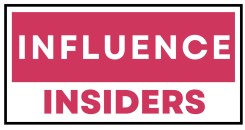
Understanding Marketing Automation
Decoding the Essence of Automated Marketing
Marketing automation is a powerful strategy that leverages various tools to streamline marketing efforts, enhance customer engagement, and ultimately drive business growth. By integrating automation tools into your business operations, you can achieve higher conversion rates and efficient lead nurturing.
In essence, marketing automation involves using a combination of emails, social media, and other digital channels to automate repetitive tasks, allowing your team to focus on more strategic initiatives. This automation strategy is not merely about convenience but also about elevating the customer experience through personalized content and timely engagement.
To ensure your automation efforts are effective, it’s crucial to set clear marketing goals and align your tools to help achieve these objectives. An effective automation tool will track performance metrics, enabling your team to make data-driven decisions and avoid common mistakes. While automation provides significant advantages, it's important to avoid the pitfalls of over-automation and neglecting customer segmentation. Tailored content that resonates with your audience can significantly impact engagement rates.
One must also consider the role of data hygiene in the overall strategy. Clean, accurate data can enhance lead scoring and improve the outcome of sales and marketing campaigns. Visit this insightful article for more on how different sectors leverage data for strategic marketing gains.
Identifying Common Mistakes
Pitfalls to Sidestep for Maximizing Your Results
When implementing marketing automation, it's crucial to understand the potential mistakes that can hinder your efforts and impact performance metrics negatively. To achieve your sales and engagement goals, avoiding these frequent errors will ensure your automation strategies are on the right path.
One common mistake businesses face is the temptation to employ every automation tool available without evaluating how it aligns with the overarching business objectives. With a clear automation strategy in mind, your team can better focus on selecting the right tools that will directly support your marketing efforts, boosting customer engagement and conversion rates.
Moreover, neglecting to maintain clean and accurate data can severely undermine automation efforts. Data hygiene should be an integral part of the process. Automating with outdated or incorrect information could lead to ineffective marketing campaigns, misguided lead nurturing, and ultimately, a drop in engagement rates.
Another area ripe for errors is content automation. Crafting personalized and data-driven content ensures better customer engagement and relationship building, enhancing both customer service and lead nurturing processes. Automation should aid in delivering tailor-made experiences that resonate with each lead.
Additionally, neglecting to align automated processes with team workflows can cause misalignment that affects campaign success. Encourage your team to regularly evaluate and fine-tune these processes as part of their regular team efforts, linking the automation tool's functions with ongoing business goals for maximized returns.
For those looking to further understand these challenges, exploring resources like navigating the financial interface design of social networks can provide deeper insights into optimizing tools for better integration and performance.
Over-Automation: A Double-Edged Sword
Balancing Act in Automation Efforts
When working towards achieving marketing goals, balancing automation is crucial. Over-automation can hinder rather than enhance marketing efforts. While automation tools can efficiently handle repetitive tasks, it’s vital for businesses to maintain a personal touch in customer interactions. Automation, when used excessively, can make emails and content feel robotic, distancing potential leads. One mistake businesses make is relying too heavily on automated processes without considering their customer base's specific needs. Automated responses should never replace human interaction in aspects that require a deeper understanding of customer service contexts. Another critical point is that too much reliance on automation tools may stifle creativity. Marketing teams should focus on crafting personalized, engaging content, ensuring it aligns with the brand strategy. Even though automated emails and drip campaigns increase conversion rates, they should complement, not dominate, your marketing strategies. Proper data-driven insights can help balance the automated elements of marketing campaigns. This ensures that communication and engagement tactics remain effective as the company's marketing automation strategy evolves. Evaluating performance metrics regularly can offer insights into whether automation aids or obstructs marketing and sales objectives. For instance, understanding how automation influences engagement rates, lead nurturing, and lead scoring can help tailor strategies, ensuring customers receive value. Automating too many tasks can lead to a decrease in data hygiene, where outdated or erroneous data affects the overall marketing strategy negatively. It's essential to optimize and audit your automation tool and process usage continually. By being discerning with automation strategies, businesses can prevent a potential decline in marketing sales and maintain or improve customer relationship standards. The key is finding a happy medium—one that maximizes your automation tool's potential while still providing customers with personalized, human experience. For more insights on how chatbots are revolutionizing digital marketing, visit enhancing digital marketing engagement.Neglecting Audience Segmentation
Tailoring Your Approach to Customer Needs
In the quest for efficient marketing, neglecting audience segmentation can significantly hinder your automation efforts. Understanding your audience is fundamental to aligning marketing strategies with customer needs, thereby preventing common mistakes in marketing automation. A key component in avoiding this pitfall is ensuring that your marketing automation tools are utilized to effectively segment your audience. Tailoring your content and campaigns to specific customer segments not only enhances engagement rates but also delivers personalized experiences that customers appreciate. Without proper segmentation, a "one-size-fits-all" strategy might lead to wrong automation decisions, reducing the impact of your marketing efforts. Automated processes should be guided by data-driven insights to improve conversion rates, lead nurturing, and lead scoring, which are essential in achieving business goals. Additionally, working closely with your team to regularly review and update segmentation criteria will help maintain data hygiene and optimize conversion and engagement rates. Ensuring that your marketing and sales teams align on segmentation strategies can further enhance customer service experiences, ultimately driving more successful marketing campaigns. In summary, audience segmentation is a critical element of any effective automation strategy. By aligning content and campaigns with customer needs through proper segmentation, businesses can avoid the pitfall of impersonal marketing efforts and instead foster meaningful engagement, driving long-term success.Ignoring Data Analytics
Leveraging Data Analytics for Successful Automation
In the rapidly evolving world of marketing, utilizing data analytics to guide your automation strategies is vital. The importance of analyzing performance metrics cannot be overstated, as it directly influences conversion rates and helps fine-tune your automation tools.
However, the true potential of data is obscured when businesses overlook its relevance, becoming a mistake that leads to lackluster engagement and lead nurturing efforts.
A sound approach starts with maintaining excellent data hygiene. Ensure that your customer and lead databases are clean and regularly updated. Cleaning up these databases prevents the dissemination of inaccurate or irrelevant content, which could damage both your brand's reputation and customer trust.
Additionally, adopting a data-driven mentality helps align your business goals with automation strategies. This alignment can enhance every aspect of your marketing, sales, and customer service, making your automation efforts much more effective. For instance, making use of lead scoring can help prioritize marketing campaigns and align them with sales efforts, thereby increasing the odds of conversion.
Analyze the interaction data collected from email and social media campaigns to help optimize response rates. The insights gained can then be leveraged to improve content relevancy and timing, further boosting engagement rates. This analytical approach underscores the need to continuously monitor for what works and what doesn't, making adjustments accordingly as driven by the data.
Strategies for Effective Automation
Crafting a Solution: Strategic Automation Planning
To optimize marketing automation, a strategic approach is essential. A well-planned strategy can prevent common mistakes and enhance the effectiveness of marketing campaigns. Here are some key elements to consider when crafting your automation strategy:- Define Clear Goals: Set clear objectives for what you want to achieve with your marketing automation. Whether it’s increasing conversion rates, improving customer engagement, or streamlining customer service, having clear goals will guide your efforts and provide a benchmark for success.
- Audience Segmentation: Don’t overlook the importance of audience segmentation. Tailor your messages to specific customer groups based on data-driven insights. Segmentation helps improve engagement rates and lead nurturing by ensuring your content is relevant and personalized.
- Leverage Data Analytics: Utilize data analytics to gain insights into your customer behaviors and preferences. This information is crucial for creating targeted and meaningful campaigns. Monitoring performance metrics regularly can help you adjust and improve your strategies.
- Choosing the Right Tools: With a plethora of automation tools available, it’s vital to select one that aligns with your business needs. The right tools can streamline your processes and enhance your marketing efforts.
- Lead Scoring and Nurturing: Implement lead scoring to prioritize potential customers based on their level of interest. This tool helps your sales marketing team focus their efforts on the most promising leads. Additionally, ensure your lead nurturing processes maintain high engagement through personalized content.
- Regular Reviews and Adjustments: Periodic reviews of your automated processes can help identify areas for improvement. Being flexible with your strategy allows you to adapt to changing market conditions and customer needs.













